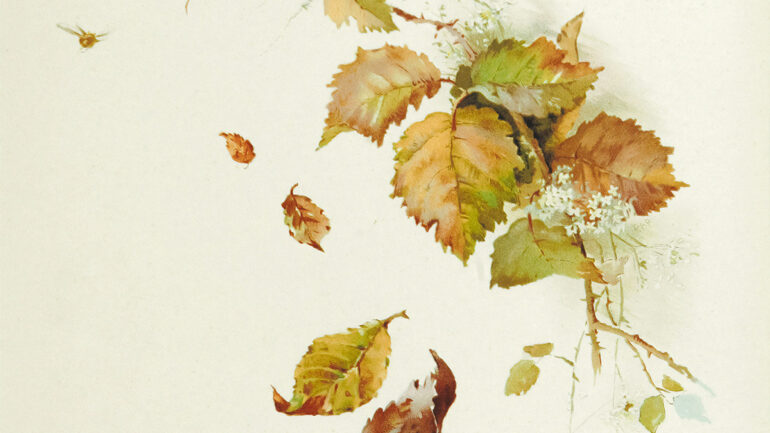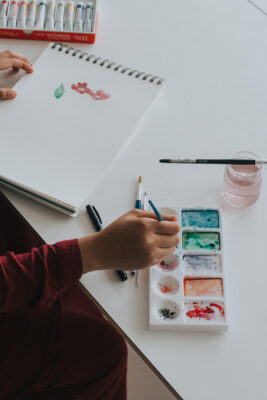
Research shows that painting is good for the health of older adults. It can improve manual dexterity, it engages the mind, and it offers opportunities for socializing and conversation. It’s good for post-op rehabilitation, as it encourages sitting up straight and engaging various arm muscles.
Plus, painting can boost morale and self-esteem — seniors can be proud of what they’ve created and the work they put into it.
When it comes to painting, the craft of watercolor stands out as one of the best crafts for seniors. In fact, it’s one of the many activities made available for CHCC residents by the therapeutic recreation department here at our Lynden healthcare center.
Why paint with watercolor?

Watercolor painting is wonderful for seniors because of how perfectly imperfect it is. The paint is so thin that it’s hard to control; the water generally just goes where it wants to. Because of this, there’s little pressure to paint perfect lines, and that’s a blessing for older people who have a harder time controlling the brush or who are undergoing physical therapy.
With its soft, calming colors, watercolor is an inherently beautiful medium. Plus, there’s a low barrier to entry. To get started, you only need a small handful of inexpensive items.
Supplies you’ll need
- Watercolor paper. Standard printer paper will work in a pinch, but it’s not great for watercolor painting. Pick up paper made specifically for watercolors or use parchment or rice paper, if you have that around.
- Watercolor paint.
- Paintbrush.
- Paint palette.
- A cup or two of water.
Watercolor tips and tricks
Watercolor paint tends to get lighter as it dries, so it might help to start with paint a little darker than the final product you’re looking for.
Still too dark? Add more water next time; the more water you use, the lighter your colors will be.
If you notice a mistake before the paint has had a chance to dry, you can try to blot the paint with a dry paper towel and then try again after the paper dries in that spot.
Remember that because of the thinness of the paint, watercolor paintings can be hard to get exact. When you paint, try to be flexible, working with the paint to create unique and beautiful art.
For more watercolor painting guidance, YouTube is a wonderful resource. Artist Joe Cartwright has a number of free tutorial videos for beginners, and a simple search of YouTube will reveal many more artists you might want to watch, depending on the style of art you’re looking for. In this video, for example, artist Ken Hobson offers a beginner lesson in painting a gorgeously colored and textured maple leaf.
Seniors living here at our long-term care center in Lynden have access to watercolor painting as one of their regular activities. Of course, family and friends are free to provide additional supplies for those older loved ones who love to paint more frequently. And if you’re looking for a volunteer opportunity in Lynden, we’d love to have you help our residents paint!
